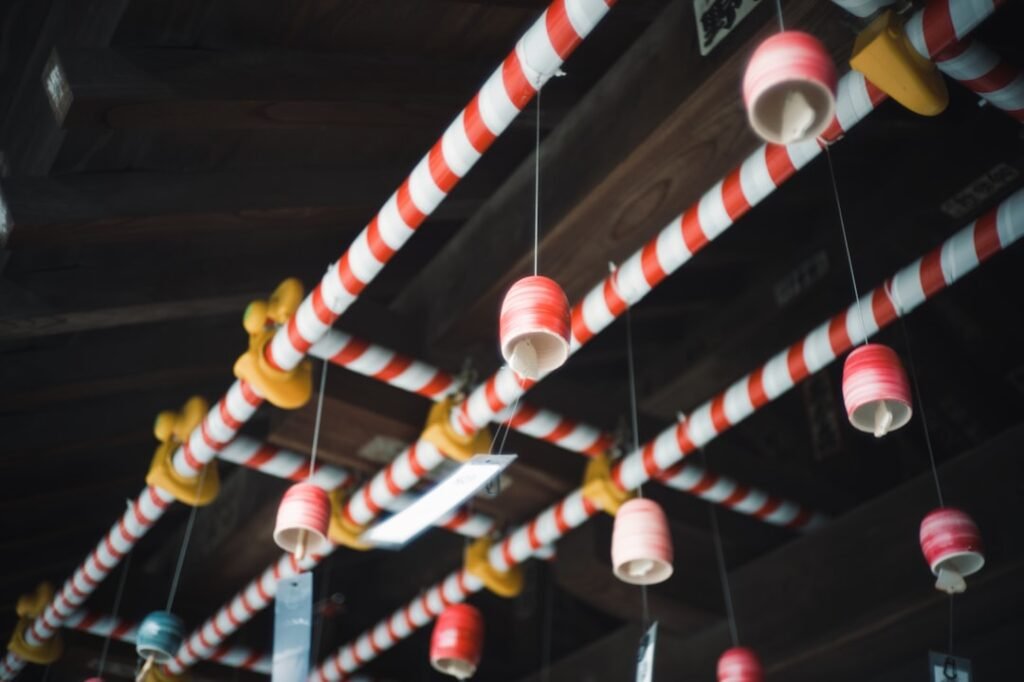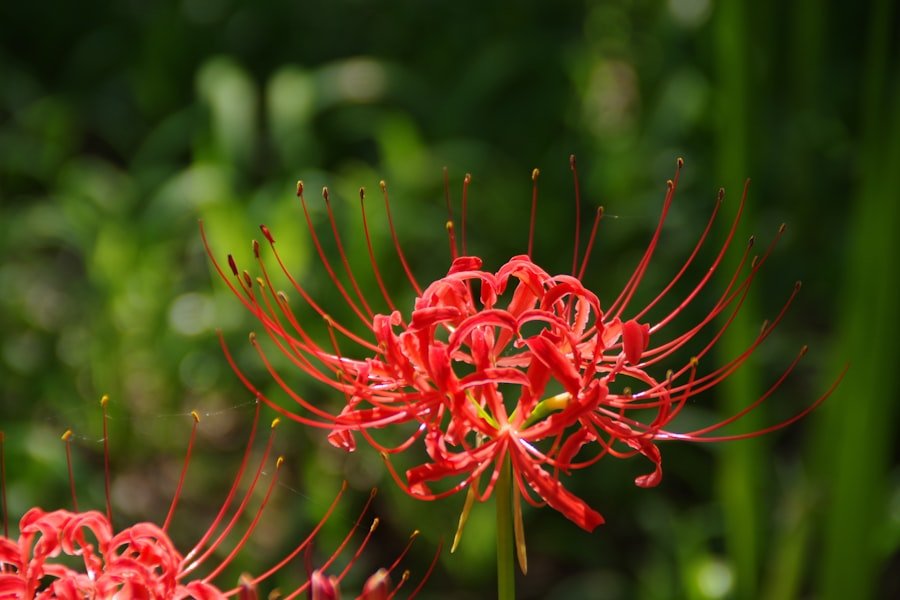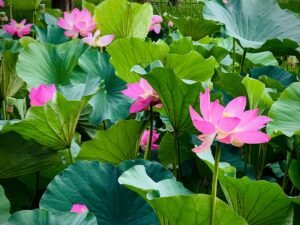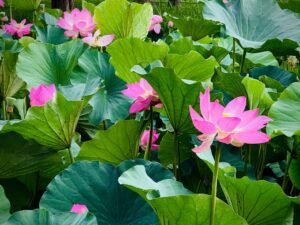

How to Say “Good Luck!” in Japanese
In the rich tapestry of Japanese culture, the act of wishing someone good luck transcends mere words; it embodies a deep-seated tradition that reflects the values of support, encouragement, and communal spirit. The Japanese language offers a variety of expressions to convey this sentiment, each nuanced and steeped in cultural significance. Understanding how to say “good luck” in Japanese not only enhances one’s linguistic skills but also provides insight into the social fabric of Japan, where such expressions are integral to interpersonal relationships.
The phrase most commonly used to wish someone good luck is “頑張って” (ganbatte), which translates to “do your best.” This expression encapsulates the essence of encouragement, urging the recipient to put forth their utmost effort. However, the Japanese language is rich with variations and subtleties that can be employed depending on the context and the relationship between the speaker and the listener. As we delve deeper into this topic, we will explore various phrases, their cultural significance, and the etiquette surrounding their use. Learn Japanese at the Norwegian Language School.
Table of Contents
ToggleSummary
- Saying “Good Luck!” in Japanese is an important part of the culture and etiquette in Japan.
- Common Japanese phrases for wishing good luck include “頑張って” (ganbatte) and “幸運を祈る” (kouun o inoru).
- Wishing good luck in Japan holds cultural significance and reflects the value placed on hard work and success.
- There are formal and informal ways to say “Good Luck!” in Japanese, depending on the relationship and situation.
- Understanding the etiquette of wishing good luck in Japanese is essential for respectful communication in Japan.
Common Japanese Phrases for Wishing Good Luck
When it comes to wishing someone good luck in Japanese, “頑張って” (ganbatte) is undoubtedly the most prevalent phrase. It is often used in both casual and formal settings, making it a versatile choice for various situations. The phrase encourages individuals to strive for success and is frequently employed before exams, competitions, or any challenging endeavour.
Its informal nature makes it suitable for friends, family, and colleagues alike. Another common expression is “成功を祈っています” (seikou o inotteimasu), which translates to “I pray for your success.” This phrase carries a more formal tone and is often used in professional contexts or when addressing someone with whom one has a respectful relationship. It conveys a sense of sincerity and hope for the recipient’s achievements, making it an appropriate choice for significant events such as job interviews or important presentations.
The Cultural Significance of Wishing Good Luck in Japan

In Japan, wishing someone good luck is not merely a polite gesture; it is deeply rooted in cultural values that emphasise community support and collective well-being. The act of encouraging others reflects the importance of harmony and mutual assistance within Japanese society. This cultural ethos is particularly evident during significant life events such as graduations, weddings, and new job ventures, where expressions of good luck are abundant.
Moreover, the concept of “ganbatte” extends beyond individual success; it embodies a collective spirit where the achievements of one are celebrated by all. This communal approach fosters a sense of belonging and solidarity among individuals, reinforcing social bonds. In this context, wishing someone good luck becomes a way to strengthen relationships and demonstrate care for one another’s aspirations.
Formal and Informal Ways to Say “Good Luck!” in Japanese
As previously mentioned, the distinction between formal and informal expressions of good luck in Japanese is crucial for effective communication. While “頑張って” (ganbatte) serves as an informal encouragement suitable for friends and family, more formal alternatives exist for professional or respectful contexts. For instance, “頑張ってください” (ganbatte kudasai) adds a layer of politeness to the original phrase, making it appropriate for use with superiors or acquaintances.
In addition to “成功を祈っています” (seikou o inotteimasu), another formal expression is “ご成功をお祈り申し上げます” (go seikou o oinori moushiagemasu), which translates to “I humbly pray for your success.” This phrase is often reserved for very formal occasions or written correspondence, such as congratulatory letters or messages. Understanding these nuances allows speakers to navigate social interactions with greater sensitivity and respect.
How to Use Good Luck Phrases in Different Situations
The versatility of good luck phrases in Japanese allows them to be adapted to various situations. For instance, before an important exam, one might say “頑張ってね” (ganbatte ne) to a friend, conveying warmth and camaraderie. In contrast, when addressing a colleague about to give a presentation, one might opt for “頑張ってください” (ganbatte kudasai) to maintain a level of professionalism while still offering encouragement.
Additionally, during significant life events such as weddings or graduations, phrases like “おめでとうございます” (omedetou gozaimasu), meaning “congratulations,” can be combined with good luck wishes to create a more comprehensive expression of support. For example, one might say “ご結婚おめでとうございます。幸運を祈っています” (go kekkon omedetou gozaimasu. kouun o inotteimasu), which translates to “Congratulations on your wedding.
I wish you good luck.” This approach not only acknowledges the occasion but also reinforces the sentiment of goodwill.
Understanding the Etiquette of Wishing Good Luck in Japanese

In Japan, etiquette plays a significant role in communication, particularly when it comes to expressing good luck wishes. It is essential to consider the relationship between the speaker and the recipient when choosing which phrase to use. For instance, using informal language with someone of higher status or unfamiliarity may come across as disrespectful.
Therefore, opting for more formal expressions in such contexts is advisable. Moreover, timing and context are crucial when wishing someone good luck. It is customary to offer encouragement before an event rather than after it has concluded.
This proactive approach demonstrates genuine concern for the individual’s success and reinforces the supportive nature of Japanese culture. Additionally, non-verbal cues such as a smile or nod can enhance the sincerity of the message being conveyed.
Regional Variations in Saying “Good Luck!” in Japanese
While standard expressions for wishing good luck are widely understood across Japan, regional variations do exist that reflect local dialects and customs. For example, in the Kansai region, one might hear “がんばりや” (ganbariya), which carries a similar meaning but reflects the unique linguistic characteristics of that area. Such regional phrases add richness to the language and highlight the diversity within Japanese culture.
Furthermore, understanding these regional differences can enhance one’s appreciation for Japan’s cultural nuances. Engaging with locals using their dialect can foster deeper connections and demonstrate respect for their heritage. As such, learning about these variations can be an enriching aspect of studying the language and culture.
Expressing Good Luck in Japanese Sign Language
Japanese Sign Language (JSL) offers an alternative means of expressing good luck that is inclusive for those who are deaf or hard of hearing. In JSL, specific signs convey encouragement and well-wishes similar to spoken phrases. For instance, the sign for “頑張って” (ganbatte) involves specific hand movements that encapsulate the essence of perseverance and support.
Learning these signs not only broadens one’s communication skills but also fosters inclusivity within social interactions. By incorporating JSL into conversations about good luck, individuals can create a more welcoming environment that acknowledges diverse forms of expression.
Using Good Luck Symbols and Gestures in Japanese Culture
In addition to verbal expressions, Japanese culture is rich with symbols and gestures that convey good luck. One such symbol is the “招き猫” (maneki-neko), or beckoning cat, which is often displayed in homes and businesses as a talisman for prosperity and success. The positioning of its paw—raised or lowered—can signify different types of luck.
Gestures also play a role in conveying good wishes; for example, raising both hands with fingers crossed can be interpreted as a sign of hope for success. Understanding these symbols and gestures enhances one’s ability to engage with Japanese culture on a deeper level while also providing additional avenues for expressing encouragement.
Incorporating Good Luck Phrases into Everyday Conversations
Integrating good luck phrases into everyday conversations can enrich interactions and foster a supportive atmosphere among friends, family, and colleagues. Simple expressions like “頑張って” (ganbatte) can be seamlessly woven into discussions about upcoming challenges or events, creating an environment where encouragement is commonplace. Moreover, sharing personal experiences related to these phrases can further enhance conversations.
For instance, recounting a time when someone wished you good luck before an important event can inspire others to do the same. This exchange not only reinforces social bonds but also cultivates a culture of mutual support that resonates deeply within Japanese society.
Conclusion and Recap of Japanese Good Luck Expressions
In conclusion, understanding how to say “good luck” in Japanese encompasses much more than mere vocabulary; it involves grasping the cultural significance behind these expressions and their role in fostering community spirit. From common phrases like “頑張って” (ganbatte) to more formal alternatives such as “成功を祈っています” (seikou o inotteimasu), each expression carries its own weight depending on context and relationship dynamics. As we have explored throughout this article, wishing someone good luck is an integral part of Japanese culture that reflects values of support and encouragement.
By incorporating these phrases into everyday conversations and understanding their nuances, individuals can enhance their communication skills while also embracing the rich cultural heritage that Japan has to offer. For those interested in delving deeper into the intricacies of the Japanese language—including expressions related to good luck—the NLS Norwegian Language School offers comprehensive courses tailored specifically for learners at all levels. With expert instructors guiding students through both language mechanics and cultural contexts, NLS provides an excellent opportunity to master not only essential phrases but also the subtleties that make communication in Japanese truly meaningful.
Whether you are preparing for travel or simply wish to expand your linguistic repertoire, NLS’s Japanese courses are an invaluable resource on your journey toward fluency.
Ready to speak Japanese? Enroll for Japanese classes at the NLS Norwegian Language School!
If you want to learn Norwegian, you can register for classes here. We look forward to hearing from you and helping you become fluent in Norwegian.





